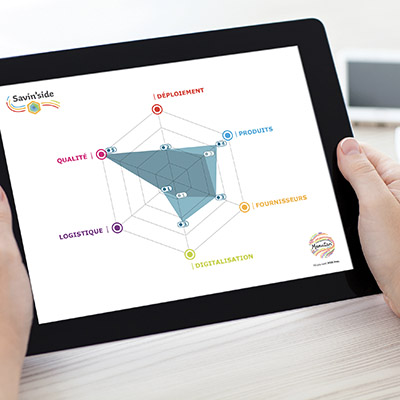In an era marked by repeated disruptions – whether health-related, geopolitical, or environmental – businesses must reimagine their supply chains to become more resilient and agile. Within this context, diversity in supply chain emerges as a strategic lever. It’s no longer just about multiplying suppliers, but about collaborating with partners from a broad spectrum of backgrounds and capabilities.
What is diversity in the supply chain?
Diversity in the supply chain refers to a proactive strategy of engaging with suppliers that represent a wide array of societal, economic, and geographic profiles. This goes beyond conventional diversification, focusing instead on building a supply chain that mirrors diverse and inclusive principles.
A truly diverse supply chain brings together a variety of actors with complementary characteristics to maximise the value delivered across every link of the network.
It includes:
- Women-owned businesses
- Ethnic or culturally diverse companies
- Local SMEs in strategic zones
- Social enterprises and solidarity-based organisations
- Veteran-owned or disability-led companies
These diverse suppliers introduce new perspectives, specialist expertise, and innovative approaches that enhance adaptability and foster supply chain sustainability.
The stakes and benefits of diversity in the supply chain
Far from being a box-ticking exercise, supplier diversity serves as a powerful engine for business performance, innovation, and market differentiation.
Economic performance
Supplier diversity fuels economic growth in numerous ways:
- Access to new markets and innovation: Suppliers from varied backgrounds offer cutting-edge solutions and invaluable insights into niche market segments.
- Cost optimisation: Broader supplier competition often leads to better pricing without compromising quality.
- Risk management: A varied supplier base mitigates vulnerabilities linked to stock shortages, health crises, and geopolitical upheaval.
Regulatory compliance & CSR integration
Across Europe, inclusive procurement policies are gaining traction. Embracing supplier diversity helps companies meet their CSR (Corporate Social Responsibility) goals and live up to stakeholder expectations.
By promoting diversity, businesses also strengthen their employer brand and reputation with end customers, especially in B2B, where ethics are becoming a bigger factor in bids and tenders.
Strengthening resilience to disruptions
Having a wider variety of suppliers makes the supply chain more flexible. By getting supplies from multiple sources—including local ones or those that focus on specific areas—companies reduce their risk of running into supply disruptions.
As Douglas Gill, Sales Manager Export at Manutan Group[1], explains:
“Businesses have every interest in establishing partnerships with key suppliers locally established in these strategic zones. This presence facilitates alignment between local specificities and group standards. Beyond reinforcing their competitiveness, this enables them to better manage risks related to supply chain disruptions and geopolitical tensions.”
Brand reputation and stakeholder appeal
Diversity is also a valuable brand asset:
- Showcasing societal impact: Customers, partners, and employees are increasingly drawn to companies with strong inclusion and diversity values.
- Standing out from competitors: Inclusive sourcing strategies help companies stand out from competitors and attract new clients and talents.
- Deepening loyalty from stakeholders: Engaged suppliers tend to be more committed and reliable long-term partners.
How to implement a diversity strategy in your supply chain
Establishing an effective inclusive supply chain strategy requires a structured vision, measurable goals, and cohesive action among stakeholders. This is not about ticking a box – it’s a full rethinking of procurement practices through a sustainable and inclusive lens.
1. Audit your current supplier base
The audit is the starting point. It helps map out all existing suppliers, look into their profiles, and see how much they contribute to overall purchasing.
This map includes:
- Company size (large firms, SMEs, micro-businesses);
- Status (e.g. women-owned, minority-led, social enterprises);
- Location;
- Criticality or dependency levels;
This analysis identifies concentration areas, diversity gaps and improvement opportunities.
2. Set clear, measurable objectives
Robust strategies rely on performance indicators. It is important to set targets that are actually reachable, such as:
- 10% of the supplier panel to be diverse suppliers within two years;
- 15% of indirect procurement with socially engaged suppliers;
- 100% of high-risk categories covered by at least one diverse supplier.
These goals should align with the organisation’s CSR ambitions and be driven by procurement departments.
3. Identify and source diverse suppliers
Expand your sourcing channels beyond traditional partners. To do so, buyers have several options:
- Join supplier diversity networks;
- Attend B2B events focused on inclusive supply and local innovation;
- Use dedicated networking platforms like WEConnect, ESDP, or MSDUK…
Sourcing can also come from internal referrals or through industry partnerships, leading to valuable connections.
4. Embed diversity in procurement processes
Once identified, these suppliers must be able to compete fairly for tenders. To achieve this:
- Adjust selection criteria to include diversity as a strategic lever;
- Ensure tenders are accessible to smaller organisations (e.g. micro-businesses, social enterprises);
- Train procurement teams to evaluate social, environmental, and regional impact indicators.
Integrating diversity into procurement tools (like SRM or ERP systems) allows teams to track and follow engagement.
5. Leverage the right tools, certifications, and networks
Useful resources include:
- Standards and certifications: ISO 20400, RFAR Label, B Corp;
- Inclusive sourcing platforms: WEConnect, MSDUK…;
- Sector-wide and inter-company networks to exchange best practices
These tools help structure your approach, identify relevant partners, and showcase your progress.
6. Monitor performance and drive strategy
Just like any other strategic policy, ongoing tracking is essential for promoting diversity:
- Quantitative metrics: Spend volume, revenue share, number of listed suppliers;
- Qualitative indicators: Internal satisfaction, supplier stability, perceived innovation;
- Consolidated dashboards for procurement departments and CSR communications.
This monitoring allows agile adjustments and helps highlight successes.
7. Anticipate and overcome obstacles
Common challenges include:
- Internal resistance from buyers or operational teams, often due to lack of awareness;
- Administrative barriers for smaller suppliers (contract terms, proceedings, payment delays)
- Lack of appropriate systems to efficiently reference and track these partners.
But there are solutions:
- Involve and train teams from the outset;
- Offer tailored onboarding to new suppliers;
- Upgrade IS systems to include diversity metrics.
Case study: Strengthening resilience through supplier diversity
A leading professional distributor faced frequent supply and logistics challenges: Demand fluctuations, environmental constraints, and raw material shortages. They responded by deploying a strategic supplier diversity policy.
Actions included:
- Prioritising locally embedded suppliers for fast delivery;
- Partnering with social enterprises for seasonal product logistics;
- Collaborating with innovative start-ups to trial eco-friendly packaging solutions.
Outcomes:
- Better peak demand absorption thanks to responsive local partners;
- Reduced transport costs via optimised short-distance flows;
- Improved customer satisfaction and stronger procurement partner trust.
This real-life example shows how diversity in supply chain drives not only logistical agility but also commercial performance.
Diversity in the supply chain is a powerful answer to today’s challenges. It fosters more inclusive supply chains, capable of withstanding shocks, adapting swiftly, and leading the way in responsible procurement.
[1] Douglas, GILL (Sales Manager Export at Manutan Group), January 13th, 2025, Centralised procurement and importing, Manutan Group, 53 min









